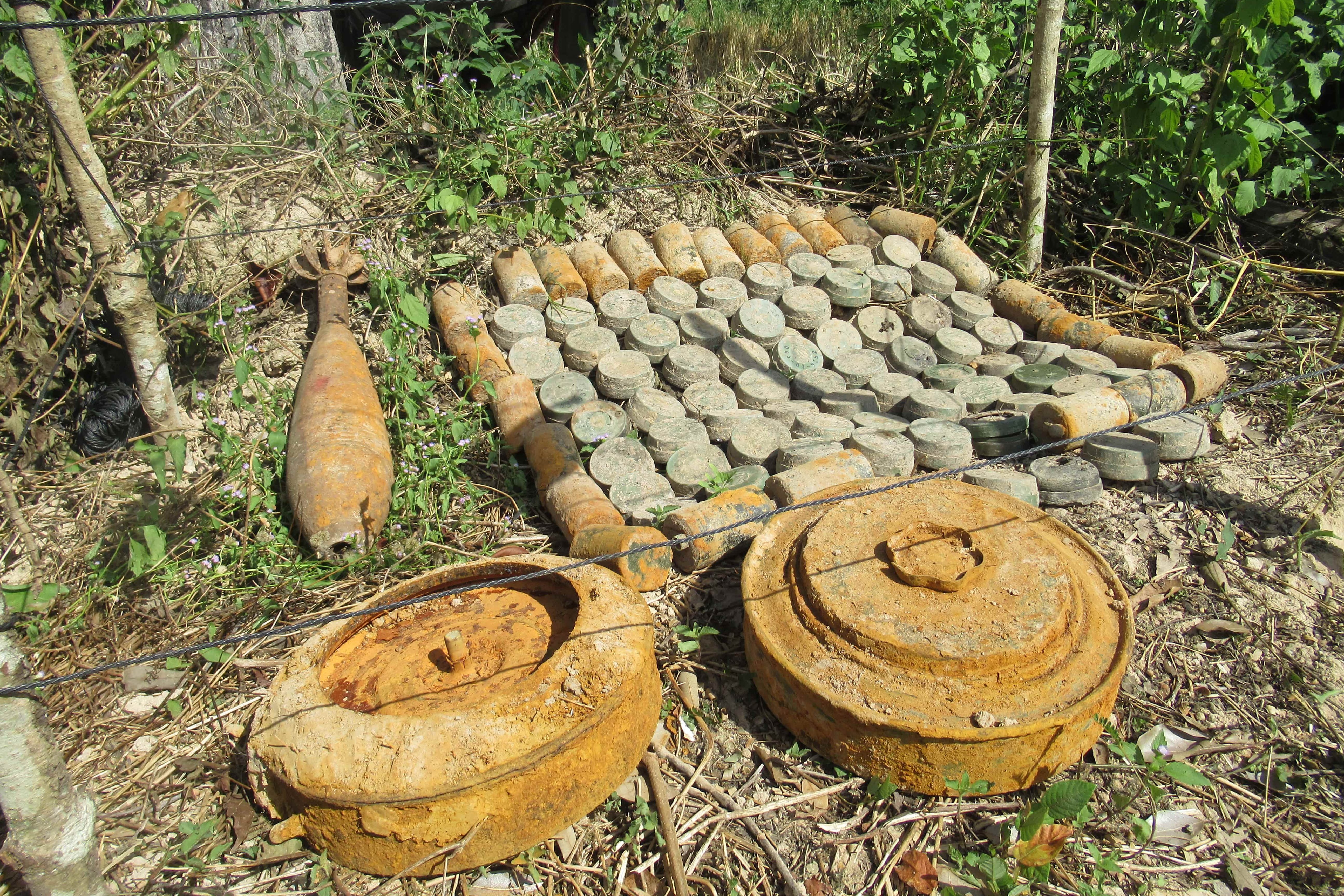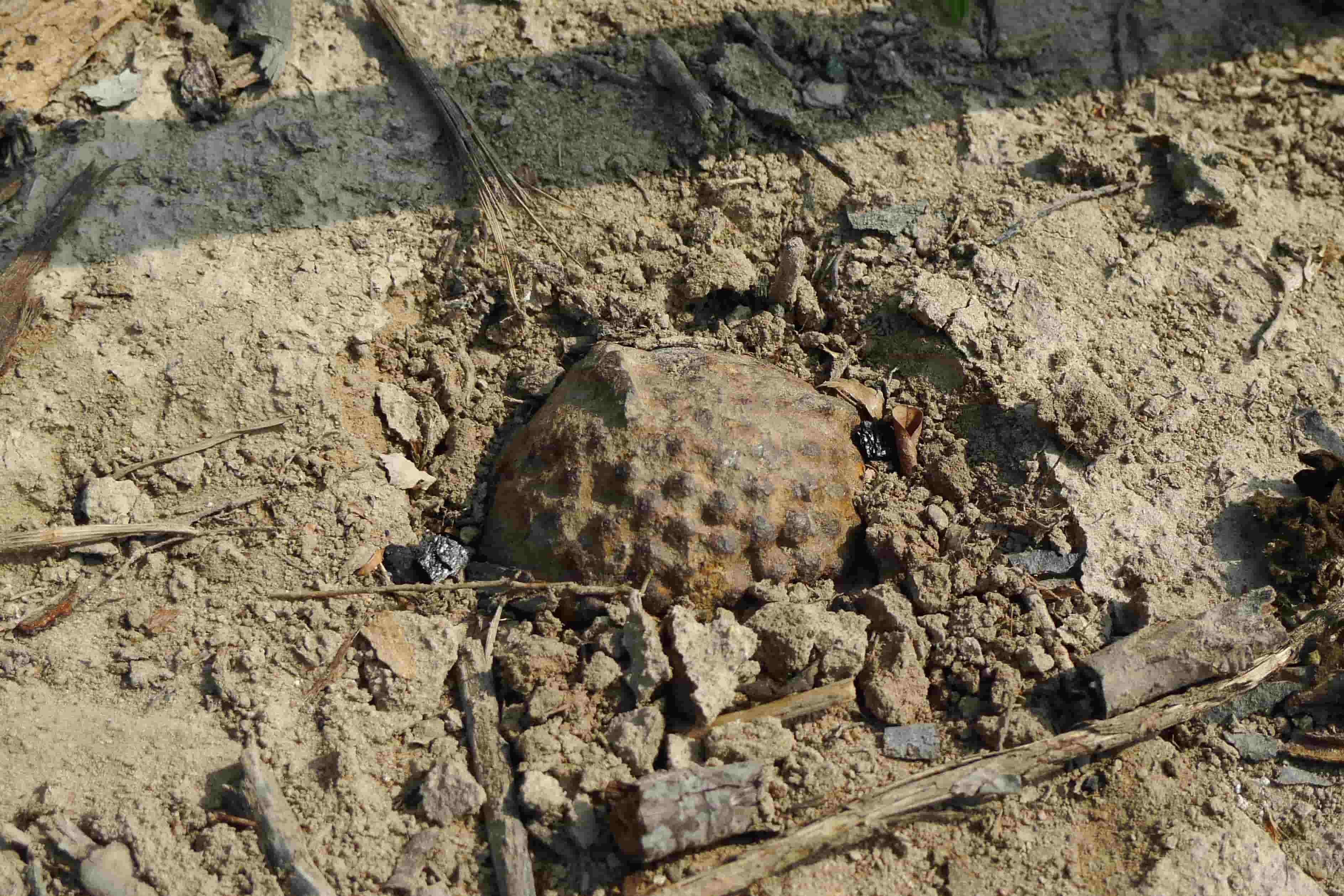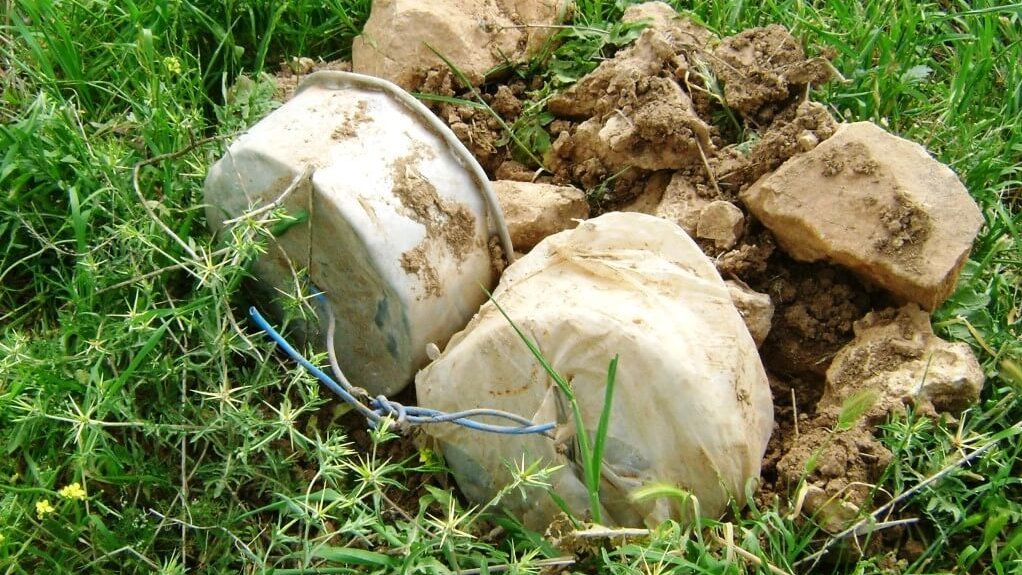MINE TYPES
Hundreds of various mine types, undetonated cluster bombs, improvised explosive devices and other explosive remnants of war are located in current and former regions of conflict. An overview of the most important types.
Mines
Mines are intended to maim or kill people. They are differentiated by the way they do it.
- Anti-personnel mines (aka pressure-activated land mines) are small, lightweight, often made of plastic and therefore difficult to detect. They are intended to "merely" maim the victim (through the effect of pressure) – thereby slowing the advancement of enemy troops.
- Stock or camouflet mines are laid on the ground and triggered by a tripwire. Their splinters kill and maim.
- Directional mines spray fragmentation in a specific direction. They are installed in front of trenches or dugouts, for example. Directional mines can kill people over a large distance.
- Bouncing mines jump about a metre into the air when tripped and also spray fragmentation. Numerous bouncing mines are specifically designed to cause injury to the genitals and abdomen. Their effect is often fatal at distances of up to 25 metres.
- Anti-vehicle mines explode when subjected to significant pressure or triggered by sensors that react to, for instance, engine heat or ground vibration. Their explosive force can destroy tanks.
The use, stockpiling, production and transfer of anti-personnel mines was outlawed by the "Ottawa Convention" of 1997. The convention has to date been ratified by 164 countries.
Anti-vehicle mines, on the other hand, are as yet not outlawed.


Cluster munition
Cluster munition is fired by rockets or grenades or dropped from planes. Hundreds of so-called "bomblets" are distributed over a large surface area. As many as 30% do not detonate and remain in situ as unexploded ordnance – with the same effect as mines.
Cluster munition also poses a threat to civilians in particular, often even decades after the war has ended. Children often see them as toys due to their shape and striking colours and are therefore especially at risk.
The use, development, production, procurement, stockpiling, retention and transfer of cluster munition was outlawed by the cluster munition treaty of 2008 ("Oslo Convention") that has so far been ratified by 120 countries.
Explosive remnants of war
The term remnants of war refers to munition that has been fired, launched, dropped, abandoned or used in another way that has only exploded in part or not at all. People often consider these duds to be harmless, even though the slightest touch can trigger an explosion even after many years.
Improvised explosive devices (IEDs)
Improvised explosive devices (IEDs) are manufactured from whatever materials are available: pots and pans, rubbish bins, mobile phone components, etc. They are systematically used to target civilians in current areas of conflict. Booby traps hidden behind doors, in cupboards or refrigerators are intended to prevent refugees from returning to their homes.
IEDs are one of the reasons why the number of victims in crisis regions such as Afghanistan, Libya, the Ukraine and other countries and places have increased significantly.

![[Translate to EN:] Minen in Kambodscha](/fileadmin/user_upload/Minentypen_Banner.jpg)